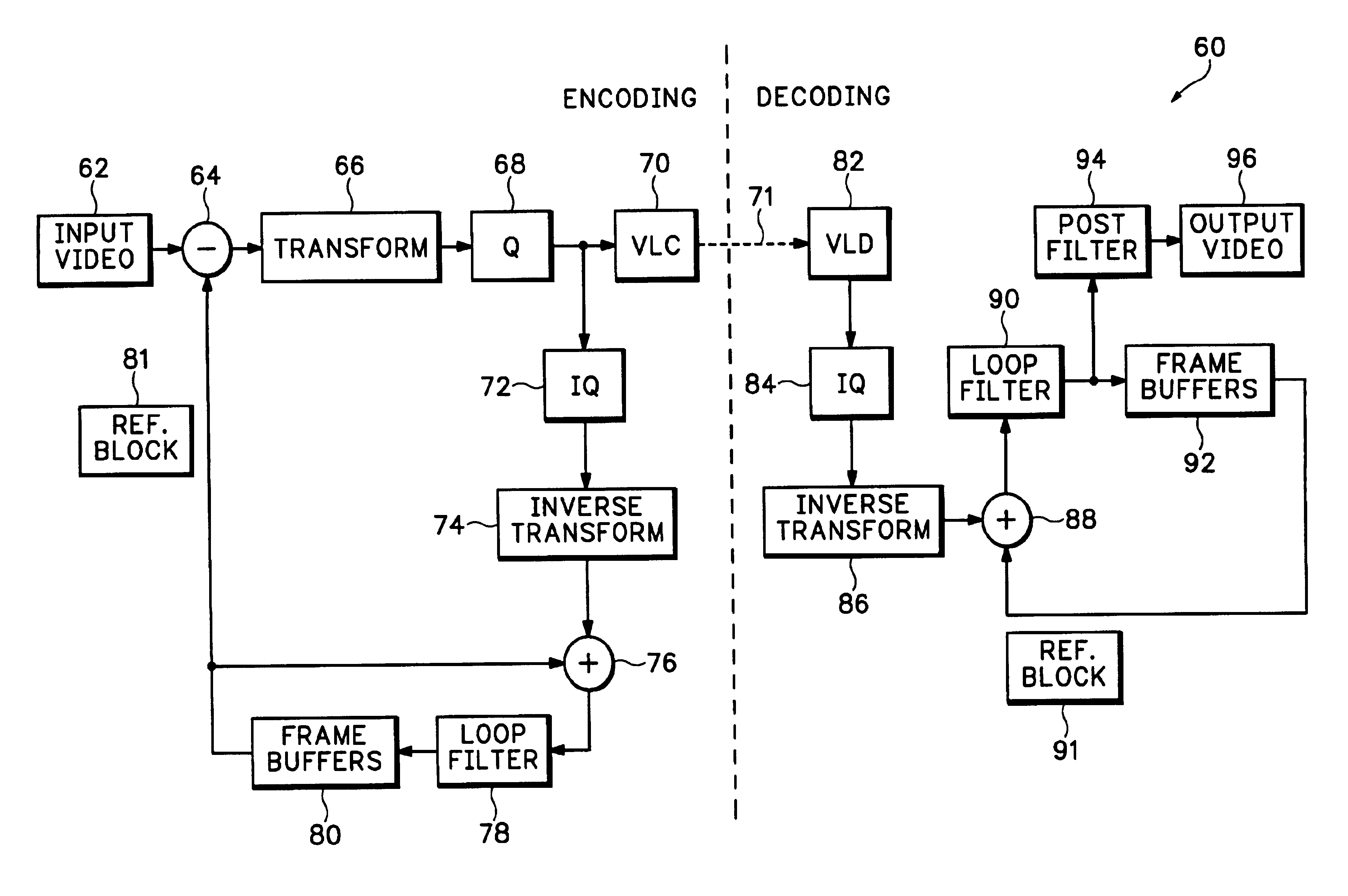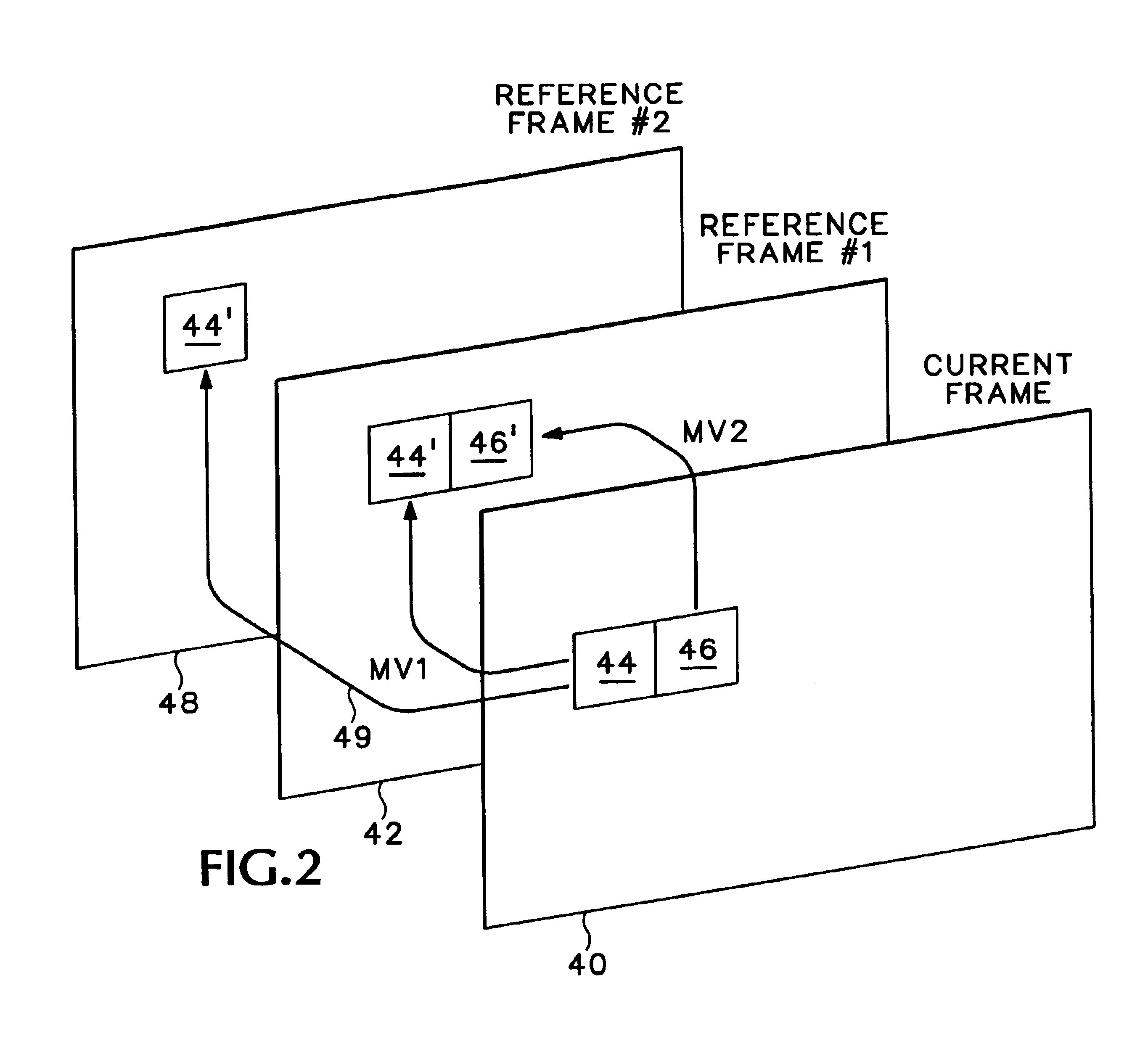Method and apparatus for controlling loop filtering or post filtering in block based motion compensationed video coding
a technology of motion compensation and video coding, applied in the field of method and apparatus for controlling loop filtering or post filtering in block based motion compensation video coding, can solve the problems of introducing blurry artifacts into the image and wasting processing resources
- Summary
- Abstract
- Description
- Claims
- Application Information
AI Technical Summary
Benefits of technology
Problems solved by technology
Method used
Image
Examples
Embodiment Construction
[0013]In conventional filtering methods, filter processing only considers a single reconstructed image frame at a time. The motion-vector information available at both the encoder and decoder is not used. If two adjacent blocks share the same motion vector with respect to the same reference image frame, (for a multiple reference frames system) there may be no significant difference between the image residuals of each block. The block boundary of these two adjacent blocks may have been filtered in the reference frame and should therefore not be filtered again for the current frame. If a deblock filter is used without considering this motion-vector information, the conventional filtering process might filter the same boundary again and again from frame to frame. This unnecessary filtering not only causes unnecessary blurring but also results in extra filter computations.
[0014]FIG. 1 shows an image 12 that selectively filters block artifacts according to similarities between image bloc...
PUM
 Login to View More
Login to View More Abstract
Description
Claims
Application Information
 Login to View More
Login to View More - R&D
- Intellectual Property
- Life Sciences
- Materials
- Tech Scout
- Unparalleled Data Quality
- Higher Quality Content
- 60% Fewer Hallucinations
Browse by: Latest US Patents, China's latest patents, Technical Efficacy Thesaurus, Application Domain, Technology Topic, Popular Technical Reports.
© 2025 PatSnap. All rights reserved.Legal|Privacy policy|Modern Slavery Act Transparency Statement|Sitemap|About US| Contact US: help@patsnap.com



